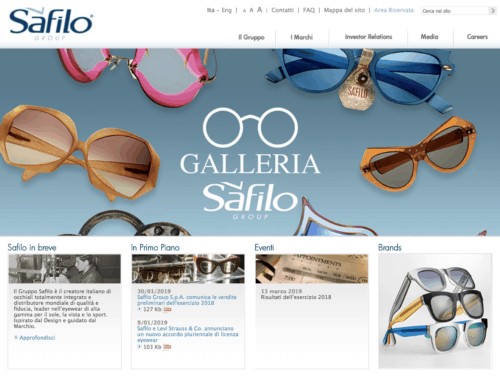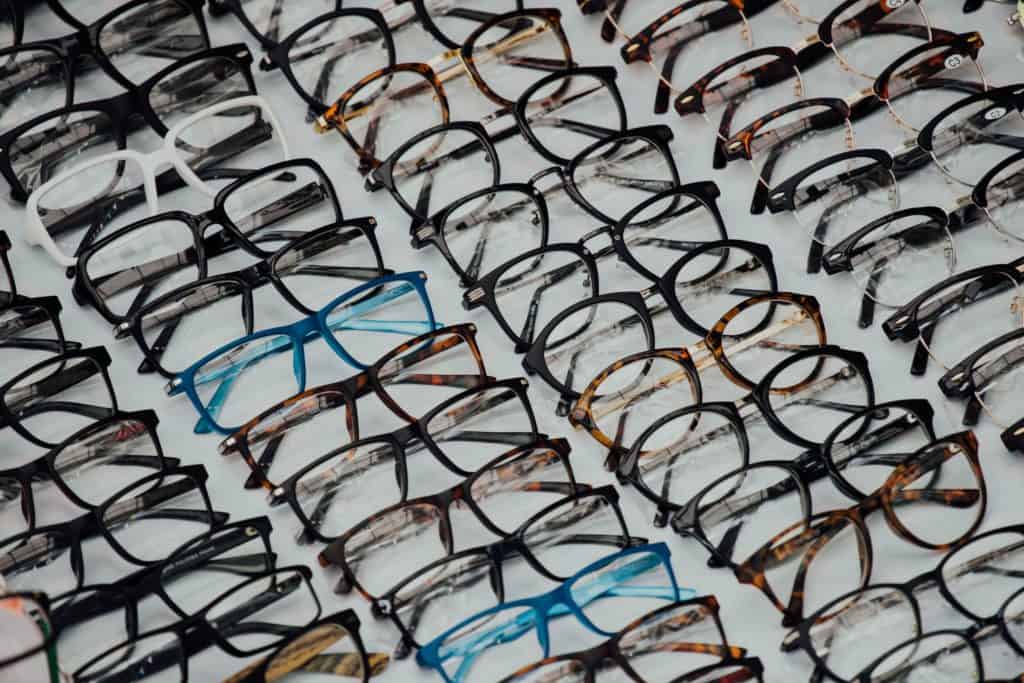During Milano Fashion Week this past February, the 49th edition of MIDO took place – the most important international trade show in the eyewear industry – attracting over 1,323 exhibitors from all over the world and over 59,500 visitors. Just like every year, the tradeshow was a good moment to take stock of the state of Italian eyewear. The financial paper Il Sole 24 Ore reported that “in 2018 the Italian production of eyewear increased by 1.6% reaching €3.9 billion Euro, with €3.7 billion coming from exports. The US has proven to be the leading consumer market (26% of the turnover), meanwhile Italy is the second largest producer - at 21% of the global eyewear market - second only to China.”
After witnessing the positive growth in this market, we thought we'd dig a little deeper into the top 4 Italian players in the eyewear industry: Luxottica, Safilo Group, Marcolin Group and De Rigo Vision.
The Top 4 Players in Italian Eyewear
Luxottica
Started by Leonardo del Vecchio and founded in 1961 in Agordo, a small town close to Belluno, the company started producing elements and accessories for the optics sector. In 1971 it launched its first eyewear collection at MIDO, achieving del Vecchio’s dream: producing glasses with the brand name Luxottica. After almost 40 years, the company went public and in 2018 merged with Essilor, and became EssilorLuxottica, now the global leader for design, production and distribution of ophthalmic lenses, glasses and sunglasses. Luxottica's main strengths include a rich portfolio featuring iconic owned brands like Ray-Ban, Oakley, Vogue Eyewear, Persol, a global wholesale network reaching over 150 countries and a large retail distribution through almost 9,000 shops. Not to mention the many under-license brands including, among others, Giorgio Armani, Burberry, Dolce&Gabbana, Prada, Valentino and Versace.
At the latest edition of MIDO, the company presented a new digital system allowing the customer to browse the group’s catalogue – through a 43-inch monitor in the store or using an iPad – and choose glasses which can be tried on in a virtual mirror, thanks to augmented reality. It also generates shareable pics on social or via chat. They've also taken on a more digital approach for B2B creating a virtual showroom – already available at the New York offices – to offer clients a 360° multimedia experience. Kamal Salama, wholesale digital sales director at Luxottica said: "This new type of showroom gives us the chance to show our digital couvette with a very high-definition resolution, and also allows us to tell the story behind our new designs with unveiled video content in addition to the classic product explanation.”
Safilo Group
Back to 1934, the first Italian company producing lenses and frames, established in 1878 in Calalzo di Cadore, was acquired by Guglielmo Tabacchi and merged into Safilo, acronym of “Società Azionaria Fabbrica Italiana Lavorazione Occhiali”. In 1987 Safilo S.p.A. was the first eyewear company to go public on the Milan Stock Exchange. In 2010 the company welcomed a new majority shareholder, HAL Holding, fortifying its presence in the optical space thanks to the vast network of shops (Gran Vision). Today, after 80 years, the Group has a strong assortment of owned brands – Carrera, Polaroid, Smith, Safilo and Oxydo – as well as under-license brands such as Dior, Fendi, Givenchy, Marc Jacobs, Max Mara and Moschino among others, and 7 owned production factories (four in Italy and three abroad), a wide range of subsidiaries in 40 countries, and a worldwide distribution with almost 100,000 points of sale.

After announcing the renewal of Missoni's eyewear license and the multi-annual agreement with Levi Strauss & Co for design, production and distribution of Levi’s eyewear, the Group attended the latest edition of MIDO and invited visitors into a space filled with high-level technology. Safilo presented the new collections of more than 30 brands of its portfolio leveraging innovation and interaction thanks to multimedia devices and virtual products displays, like the holographic pyramid, giving visitors the chance to get in touch with its universe and experience it.
Marcolin Group
It was 1961 when Giovanni Marcolin Coffen started in Veneto, more precisely in the Italian eyewear district, the "Fabbrica Artigiana" specialized in the production of gold laminated side arms. Thanks to the success of this start up, after only three years, the company became Marcolin occhiali Doublé, from the name of that gold laminate. After over 60 years, today Marcolin is one of the leading groups in the global eyewear industry with 11 subsidiaries in the world, 4 joint ventures and more than 150 distributing partners in over 125 countries. Beside the owned brands – Marcolin, Viva, Web Eyewear – the company has eyewear licenses for many famous brands including Tom Ford, Diesel, DSquared2, Emilio Pucci and Ermenegildo Zegna.
For Marcolin, MIDO coincided with the announcement of a new partnership – for 5 years – with Max Mara group to design, produce and distribute Sportmax eyewear. Massimo Renon, Marcolin CEO, declared: "Both groups are characterized by 'forward-looking' business models aimed at cutting-edge technological and manufacturing solutions and high-quality production processes. The Max Mara Group has found in us the ideal partner to further improve and internationalize the brand, developing common synergies and plans over the medium to long term." An important result which enriched Marcolin's presence at the Italian and international eyewear trade show where they showed their Sportmax collection – among others – debuting on the runway at Milano Moda Donna the day before the trade show started.
Visualizza questo post su Instagram
Come to discover all our #collections at @mido_exhibition - Hall 1 - Stand R02 U09
De Rigo Vision
Founded in 1978 by brothers Ennio and Walter De Rigo as a little artisanal factory in the Belluno area, over the last 40 years De Rigo positioned itself as one of the global leaders for design, production and distribution of eyewear and also as one of the most important retailers in the industry. Together with house brands Police, Sting and Lozza, it produced eyewear for Trussardi, Furla, and Converse – to name a few – distributed in almost 80 countries through 16 commercial subsidiaries, 4 retail departments and over 100 independent distributors. As told by the AD Michele Aracri during MIDO, today the company aims to increase its business in the US: "Europe covers 54% of the turnover and we grew 5% here; 23.5% has been generated by the US. It's our target and we'd like to grow double digit reaching 40%."
Latest news includes the license, signed in January, with Mulberry, the iconic British leather goods brand, the collaboration between Police and the movie saga 'Men In Black' and, most of all, the Blumarine capsule collection made with the Italian influencer Giulia De Lellis: Two exclusive sunglasses in 7 color options, designed by the Italian opinion leader which had an immediate success. "The content she shared on Instagram reached 200K likes in one hour and we've been contacted even from Canada and the US", said the AD.
Thanks to these 4 big players, Italy continues to lead the global eyewear industry, constantly innovating and setting the pace for the evolution of eyewear worldwide. The data on the future of this manufacturing sector is encouraging and we believe in its growth. What do you think the future of Italian eyewear will look like over the next years? We'd love to hear your opinion in the comments below.
